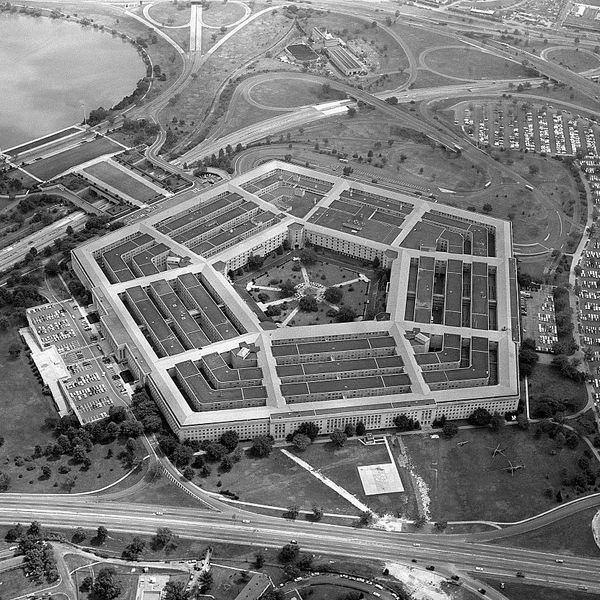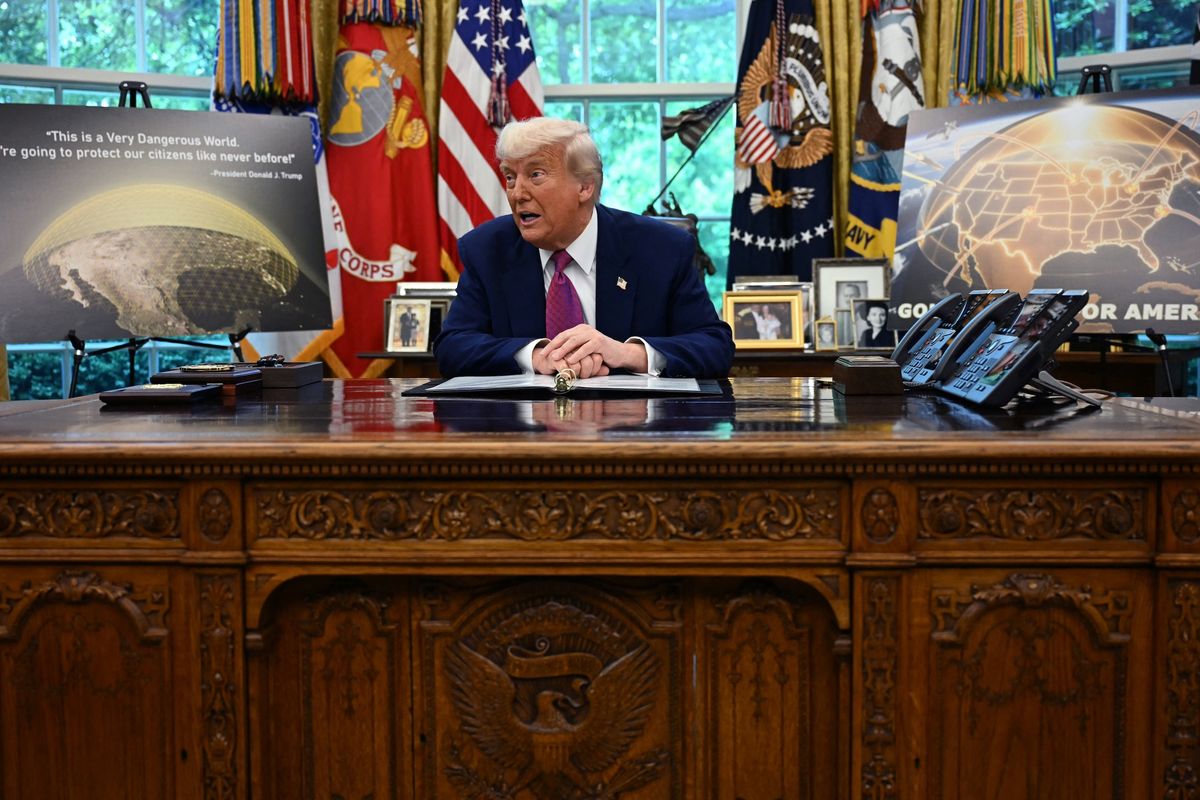OPINION — “Operation and maintenance and military personnel funding [in the Defense Department] typically must be obligated in the year for which they are appropriated. This policy creates incentives to obligate any remaining funding quickly at the end of the fiscal year to avoid losing the money to other internal DoD priorities or back to the U.S. Treasury, often called ‘use it or lose it,’ which can result in year-end spending on lower priority projects or activities.”
That’s a quote from the interim report released August 15 by the Congressional Commission on Planning, Programming, Budgeting, and Execution (PPBE) Reform, which was set up by Congress in the Fiscal Year 2022 National Defense Authorization Act to update the current defense budget process, which is put together through a complicated, multi-year process.
I know that budget stories can make for deadly boring reading, but this one involves history going back to the Kennedy administration and the varied negotiations and relationships between and among the military services, the White House, and Congress.
Needless to say, I’ve spent decades trying to cover what’s happening in defense budgeting and this may be the beginning of a new phase.
The task of this 14-member commission, headed by former Pentagon Comptroller Bob Hale, has been to examine the effectiveness of the Defense Department’s budgetary process, which had its roots in this so-called PPBE system. It was established back in 1962, by then-Defense Secretary Robert McNamara, his Comptroller Charles Hitch, and the young Whiz Kids, several of whom, like Hitch, had come from the Rand Corporation.
In the pre-McNamara days, much of defense spending choices arose from budgets put together by each military service whose chiefs then made compromises among themselves. Attention was also paid to demands by senior Members of Congress, particularly at that time by powerful Armed Services Chairmen like Sen. Richard Russell (D-Ga.) and Rep. Carl Vinson (D-Ga.). The Defense Secretary back then had little influence over the defense budgeting system.
McNamara, with his business background, wanted control over the process and adopted budget planning tools that Hitch had developed at Rand, which, in essence, became the PPBE system. It called for the examination of multi-service defense initiatives in appropriation packages, such as strategic forces, general purpose forces, and missile defense, to minimize duplication. It also applied analytics such as cost/benefit analyses and called for constructing budgets out to five years to take account of long-term effects.
It's not just for the President anymore. Are you getting your daily national security briefing? Subscriber+Members have exclusive access to the Open Source Collection Daily Brief, keeping you up to date on global events impacting national security. It pays to be a Subscriber+Member.
To this day, such program elements remain the current PPBE’s building blocks for DoD budgets. The 2022 Commission’s work has focused on finding ways to improve the PPBE process to enhance the United States’ ability to counter today’s strategic competitors.
In its August 15 interim report, the Commission recommended several key actions that could be implemented now and other potential recommendations on which the Commission seeks additional stakeholder feedback before its final report, which is due in March 2024.
For example, the interim report says, “The Commission feels strongly that the rules requiring obligation of all O&M [Operations and Maintenance] and MILPERS [Military Personnel] funds during the year in which they are appropriated constitutes a serious problem.” One DoD official told the Commission the current O&M use-it-or-lose-it rules create an incentive for officials to do “some crazier things to try and get some of the money obligated and spent.”
The Commission said it “feels strongly that changes should be made to make one-year appropriation available for long enough to permit effective execution.” For example, it is looking at proposing a “two-year minimum availability for all appropriation accounts, which would reduce use-it-or-lose it pressure and allow for reprogramming of expiring funds, particularly O&M, reducing lost buying power due to expiration and cancellation.”
The Commission noted that the Defense Health Program has O&M carryover authority and the National Aeronautics and Space Administration has two-year availability for non-construction appropriations while the Department of Homeland Security has authority to carryover half its unobligated balances for some appropriations.
On this recommendation, the Commission seeks further input from appropriate Congressional and DoD stakeholders before putting it in the Final Report.
As one of its key actions that could immediately be implemented, the Commission urged that DoD provide an annual mid-year update briefing led by the Under Secretary of Defense Comptroller and representatives of each Military Service.
Currently, much budget data comes via reports demanded by Congress. A February 2022 GAO report, cited by the Commission, said, “New reporting requirements from Congress has more than doubled from 513 in FY 2000 to 1,429 in FY 2020.” The Commission was also told that not all requests can be easily answered quickly due to the processes involved. They can take considerable time to research, compile the response, and then staff for approval.
The proposed mid-year update would cover budget execution and identification of new developments that impact the budget proposal that would be then before Congress. It also could include the reprogramming needs up to that point of the fiscal year. In fact, the Commission said the first prototype of the mid-year discussion should come in June 2024. That would be after publication of the Commission’s Final Report in March.
At a session of the Defense Writers Group on August 15, Commission Chairman Hale explained that when the Defense budget is delivered to Congress, generally in early February, there is “an avalanche of information…But after that the information they get is episodic, only when they ask for it, [and] sometimes it’s not consistent with information they’ve gotten before.”
The update, Hale said, could provide some innovation Defense officials didn’t anticipate when the budget was put together more than a year previous. “If you want to do something about that,” Hale said, “Congress, you can. And similarly, some systems may be slower or faster than had been anticipated.”
Hale went on, “Congress may agree with some of these and make some of these changes in their markups, in their [House-Senate] conference [on budget authorization and appropriations bills], so fewer changes would have to be made in execution…I think this was an area where the commission, especially its members who had served in Congress, felt this could be a step in the right direction. So, it was one of those that we designate in the commission as a key recommendation. And one, again, I think they could get started on now.”
Appearing with Hale, Ellen Lord, Vice-Chair of the Commission and former Under Secretary of Defense for Acquisition and Sustainment, told the Defense Writers, “We see this as a multi-step process, kind of a crawl, walk, run. I believe we can crawl with the actions we say are ready to be implemented now.”
The Commission is considering alternatives to modify reprogramming authorities and policies to promote innovation and flexibility within a current year’s budget to meet emergent needs and war-fighter requirements, particularly with high-tech programs.
Subscriber+Members have a higher level of access to Cipher Brief Expert Perspectives and get exclusive access to The Dead Drop, the best national security gossip publication, if we do say so ourselves. Find out what you’re missing. Upgrade your access to Subscriber+ now.
The Commission reported that Program Managers had said, “They did not have the needed agility in the year of execution to ingest new technology and innovation or pivot effectively to an unplanned requirement without disrupting already spoken for resources.”
“Finding ways to improve PPBE’s ability to foster innovation and to adapt more quickly to changing requirements is hard, but I think it would be particularly a high payoff area,” Hale told the Defense Writers. “The threat is moving quickly and we have the ability to implement new technology, but our systems are holding us back.”
Vice-Chair Lord said one Commission recommendation for immediate implementation was to electronically provide budget justification books and make them searchable, sortable, and able to be updated electronically by both the Congress and DoD. “I believe if the Hill saw that execution data,” Lord said, “you could really have this flexibility and be funding the programs that are moving along and perhaps stopping the ones that aren’t and make more time-relevant decisions. Also build the trust between the two groups [Congress and DoD].”
The Commission, according to its interim report, is also looking at ways to updating reprogramming of funds which now take six months or more. One idea is to delegate some reprogramming or even new start authority to the military services or agencies, particularly for programs of less than $50 million, which make up a majority of such actions.
Perhaps the most ambitious idea under Commission consideration is to restructure the Defense budget, which it describes as “inflexible,” in part because it is divided into “48 unique investment budget activities across 23 different appropriations that constrain transfers, as well as 1,700+ budget items with a median size of $35-40 [million].”
The Defense budget is not the only element that has grown. DoD officials pointed out to the Commission their concerns about the length of authorization bills which from 2000-2005 averaged 416 pages but grew to over 876 pages from 2018-2022.
In addition, the Commission said, “Laws and regulations designed to safeguard Congress’ power of the purse further require that funds be expended only for the purposes for which they are appropriated,” such as Research, Development, Test and Evaluation, Procurement, O&M, and MILPERS.
“A single major acquisition program often has multiple budget lines and budget activities, making it difficult for Congress to track the entire program, and even more difficult for the Department to manage the program,” the Commission said
Under the current system, the Commission said, “Faced with a choice between buying down risk and improving performance on existing program content, or taking on additional risk by spending money on new, untested program content, most [Military] Services seem likely to choose the conservative option.”
A primary objective of PPBE was to provide a clear and direct linkage of the budget to strategy. But the Commission was told “DoD has processes and mechanisms to link budgets to strategy, although these are not always consistent or fully institutionalized in their application or reporting mechanisms across the DoD.”
One of the Commission’s proposed budget transformation ideas “would begin with the Military Services as the primary budget building block, then show major force capabilities within a Service, followed by programs in the major force area including some or all the specific platforms.”
Mark Cancian, a senior adviser at the Center for Strategic and International Studies, suggested last week that the Commission budget transformation idea reflected a budgetary approach taken during the Iraq and Afghanistan fighting, when DoD created funds to pay for the Joint Improvised Explosive Device Defeat Organization and the Mine Resistant Ambush Protected Vehicle.
In both those cases the programs were funded by lump sums and DoD decided which activities the funds supported – R&D, Procurement, O&M, etc.– and reported it to Congress in a timely manner. “The Commission is suggesting an approach like this but without the impetus of a crisis atmosphere,” Cancian wrote.
The Commission said, “This transformed structure should help both DoD and Congress better understand where and what a program’s funds are being spent on and how that spending relates to the strategy.”
Hale described the proposal as “an attempt to restructure the budget so the dollars are expressed in a more mission-oriented fashion, and perhaps Congress even eventually appropriates in a more mission-oriented fashion…It would be far-reaching, it would show the budget by agency and something called mission capability area, or major capability area.”
Let’s see how many of the Commission’s ideas get translated into actuality.
The Cipher Brief is committed to publishing a range of perspectives on national security issues submitted by deeply experienced national security professionals.
Opinions expressed are those of the author and do not represent the views or opinions of The Cipher Brief.
Have a perspective to share based on your experience in the national security field? Send it to Editor@thecipherbrief.com for publication consideration.
Read more expert-driven national security insights, perspective and analysis in The Cipher Brief














